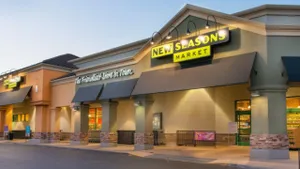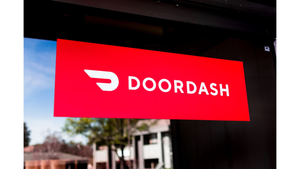The world of power
January 1, 2018
A retailer roundtable, sponsored by Grocery Headquarters and Energizer Battery Co., found that merchants are still excited about the future of the batteries category. By Seth Mendelson Batteries, in some shape or form, are here to stay. That was the consensus of a retailer roundtable held in early June in Orlando, Fla. Even as the category revitalizes itself, retailers at the event said that there are a number of challenges ahead to make sure this category stays competitive at the food store. Sponsored by Grocery Headquarters and the Energizer Battery Co., the roundtable found that retailers are still very interested in developing their batteries departments and using all methods available to build sales and profits from the category. Retail participants at the roundtable came from Winn-Dixie, H-E-B, Ahold USA and Bi-Lo. “The goal of this meeting is to provide insight into the current world of batteries, and how to capture more sales from this highly profitable GM category,” said Lou Martire, vice president of trade development for St. Louis-based Energizer. “The latest reports show that newly developed devices requiring primary batteries are steadily increasing. This will translate into more sales at retail in the near future.” Martire emphasized the opportunity for retailers, specifically the supermarket trade, which currently accounts for about 13% of industry sales. “When we first analyzed the battery market opportunity we determined there was an additional $200 million, plus business potential for retailers to capture from the batteries category,” he said. “That meant about $30 million for the grocery industry. But then we took a step back and said the opportunity in grocery is not for merely $30 million. The opportunity is actually anything grocery retailers wish it to be providing they develop a merchandising program that captures more battery shoppers in their stores. And, to do this one must incorporate a battery home located on one of the front-ends, plus batteries at all checkouts. In addition, a store needs to have a home health specialty battery wing rack in pharmacy. Primary battery wing racks and clip strips should be considered near high traffic areas. Remember, batteries are a prompted purchase. The key to selling batteries is to interrupt the shopping trip.” Ready for the next phase The retailers in attendance seemed to understand the situation and said they are prepared for dramatic changes in the batteries category in years to come. Yet, they say the changes in the category—and with consumer shopping habits and needs—have made merchandising the batteries section more taxing. Their concerns varied from such factors as large floor displays to cross merchandising batteries with other segments. Sarah Heximer, a category director for Jacksonville, Fla.-based Winn-Dixie, noted that large floor displays may work at larger stores but they can be a challenge at smaller units. “Some of our stores want to sell batteries through floor displays but they can only use 24 or 36 piece units,” she said. “We want to give our smaller stores an opportunity to sell as many products as possible and these shippers can help create consumer awareness. But the larger units are hard to find a home for and then we have a problem trying to find a place for them once the promotion is over. Pricing can also be an issue. Jim Wonderly, vice president, grocery nonfoods/general merchandise for Quincy, Mass.-based Ahold USA, says supermarkets are locked in a perception battle over pricing with other retailers and it is important to have more flexibility in such categories as batteries. “The structure that is in place can be frustrating, at least when it comes to forced advertised retails,” he said. “It plays a role particularly when the MAPs (minimum advertised prices) are not price points we would normally use in our circular. Historically, supermarkets do not have a strong everyday price image for general merchandise products. We may have great prices, but do not always receive credit from the customer. A flexible promotional strategy allows us to enhance our price image. When we don’t have flexibility, it can hurt us.” Shrinking space Another potential issue is the disappearing space at the front-end. Each retailer pointed out that batteries are fighting a number of other categories, including candy, magazines and even beverages, for valuable front-end space. Now, some noted, new technology is starting to play a larger role at the front-end and it will soon change how people pay for their merchandise and how they shop the checkout. “I think one thing we have to think about is what the front-end is going to look like in the next five years and what are the categories that are going to generate the most incremental sales and profits,” said Bill Anderson, vice president, drugstore, beauty and general merchandise for San Antonio-based H-E-B. “Then there’s a bigger question. In five or 10 years, the technology may be available where there is no longer any need for merchandising at the front-end because people will have already scanned their items and they will no longer need to dwell at the checkout. “To me that is the bigger question. We have to start thinking about that because at that point the merchandising at the front-end could go away.” Terry Cerwick, director of GM/HBC for Mauldin, S.C.-based Bi-Lo, said that his company actually took batteries off the front-end. It was one of those decisions he regrets making. “We did it to add space for other categories with faster turns. We quickly moved to put batteries back on the checkstands. Unfortunately during the time batteries were off the front-ends we lost valuable impulse sales on a high margin category. “If you don’t have the extra locations in your store, especially at each checkstand, you’re not going to be successful in maximizing your battery sales. Consumers purchase these items on average three times a year, we want to make sure they buy them with us. Highly visible secondary locations are a must to maximize your battery sales, it’s that simple.” Anderson said that understanding where batteries sales are actually made is vital. “If checkout is an important aspect of building batteries sales, which I think we all agree it is, it would be very helpful to understand what percentage of batteries are purchased at checkout,” he added. “We have a lot of locations around our store for batteries and I cannot tell you where the sales are coming from. Are they coming from an end cap in the store, or are they coming from the front-end?” Key to growing GM All retailers agree that their shoppers expect to find batteries at the checkout and that they must be there. Moreover, regardless of where they are sold, all of the retailers in attendance agreed that batteries are important to their overall general merchandise strategies and converting shoppers into purchasers of batteries is vital to the category’s growth. “We know that there are two really unique things about the batteries category that make it different and that make conversion so vital,” said Jason Catlin group director, trade marketing at Energizer. “The first is that people don’t experience the affect of our product directly. They only experience them through a device. The second is the fact that they buy them only three or four times a year. As a result there is fairly low involvement with the category and most folks aren’t thinking about batteries before they go to the store. “What’s surprising is that when we do research about 30% of people tell us they put batteries on their shopping list. Yet, when we actually go and stand in the store we observe less than 10% of battery shoppers using a list. “That makes displays so important in prompting the shopper to remember their need to buy batteries That’s why retailers need permanent, visible merchandising to capture the consumers’ attention.” The retailers also expressed a keen interest in the promotional activity associated with batteries, particularly with the increasing popularity of value-packs. “We are doing a lot of work with pricing elasticity for both base and promotional prices,” said Dewayne Rabon, vice president of HBC/GM and family care for Winn-Dixie. “We are more robust in our evaluation of promotional elasticity and it has definitely helped us make better decisions.” However, Rabon stresses there is a continual struggle retaining current customers and attracting new consumers into the category. “It is a fine line, we don’t want to lose any business and we want to keep our current shopper base in the category,” he said. “We don’t want to lose a sale during the key selling periods when consumers are looking for the larger value-packs. Finding the right mix is also important. Martire said that batteries for hearing aids are ever growing and definitely need to be placed near the pharmacy. And while AA and AAA batteries continue to dominate the batteries market, he stressed that other types, including lithium button cells, are gaining market share with extraordinary profit margins. “The consumer wants to know that they can get all battery needs at one retailer,” he said. “It is so important for them to know that they don’t have to shop various stores for AA and AAA and their 9-volts plus all their specialty battery needs. If you show your operations people why it is important to have a full battery program, typically they will listen and they will make sure it gets executed.” Cerwick at Bi-Lo agreed with that point. “These products offer us good sell-through and full margins,” he said. “The consumers are just happy to have the assortment available and are willing to pay for the convenience.”
About the Author
You May Also Like




